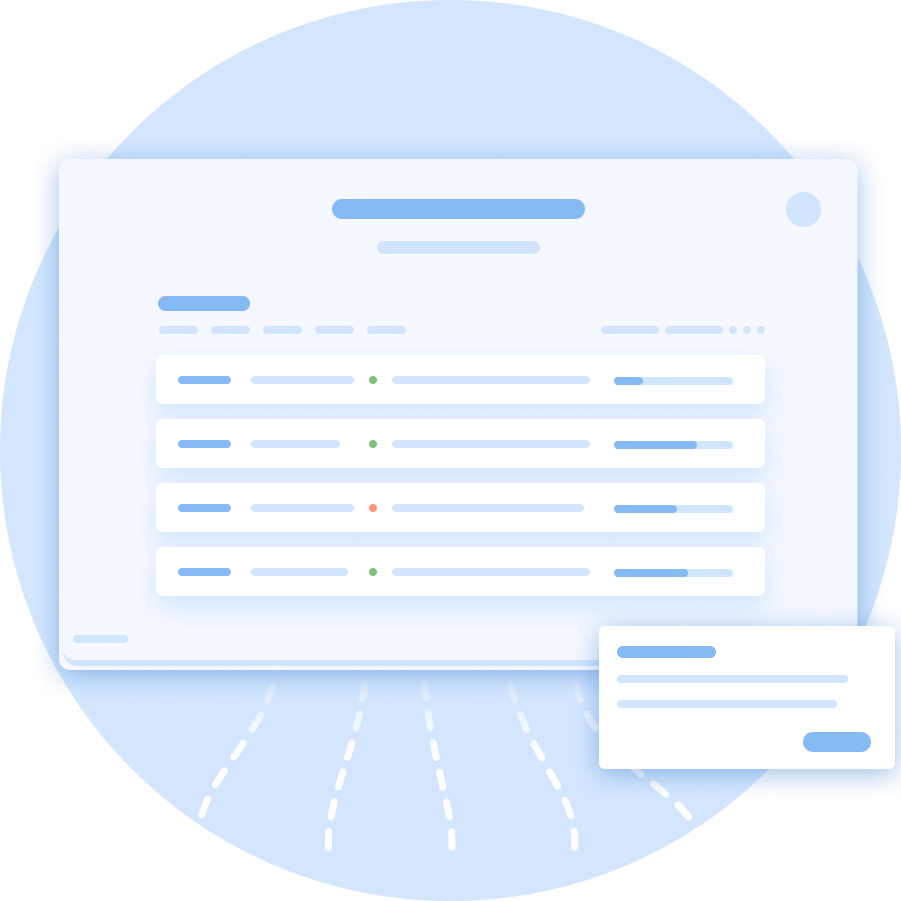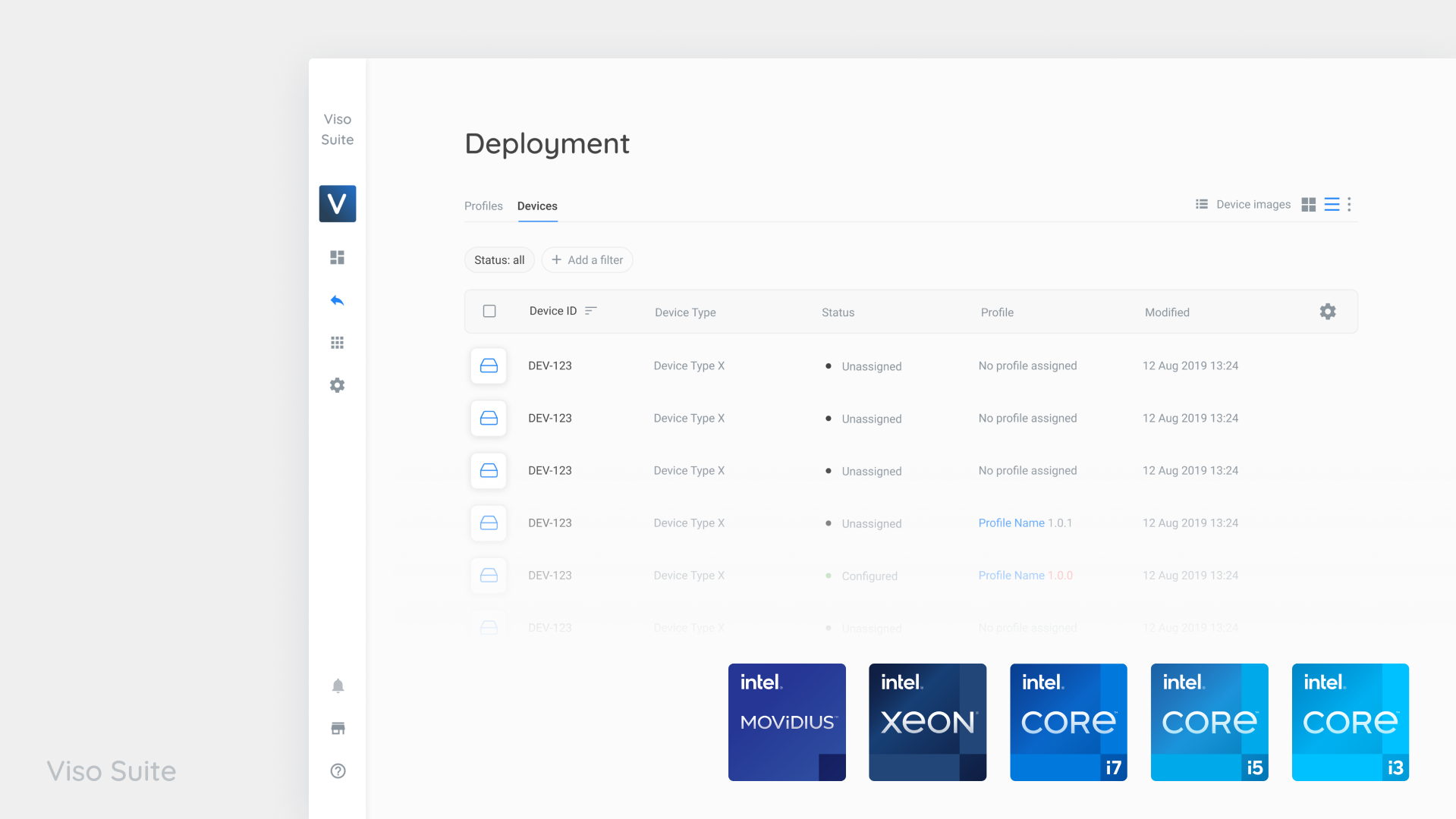Viso Suite provides a comprehensive device management and deployment manager to deploy computer vision at scale. Teams can manage different releases and deploy applications safely to a fleet of edge devices. The platform automates every step of the edge device lifecycle.
The no-code deployment of Viso Suite makes deploying complex applications fast and simple, teams are no longer required to have specialized skill sets, install libraries or clients, or write scripts. The integrated version control system facilitates maintaining and updating of rolled-out applications, with dependency analysis and fast roll-back tools.
The Viso Deployment manager provides fully automated deployment pipelines to release applications using deployment profiles for different environments. Deliver different applications to hundreds of edge devices, at the push of a button.
Viso supports governance and separation of duties by managing the roles, permissions, and security policies for each workspace individually.
Integrated edge device management
Viso Suite provides an integrated Viso device manager that enables teams to securely enroll and manage a fleet of physical edge devices or servers. The model-driven architecture simplifies the cloud-to-edge deployment of applications. The ability to enroll devices automatically, without installing a client or libraries manually, allows for end-to-end security and performance optimization required to build highly efficient systems in one place.

Manage application releases with deployment profiles
With Viso Suite, it is possible to take a snapshot of the application and its modules, and use the application version for deploying. This is usually done when the computer vision application needs to be tested or a milestone is reached, allowing for retrieving that state of the application and its modules at any time. Viso automatically manages the version control and impact analysis to identify and tag minor or major versions.
The deployment package of a computer vision application is called a profile, it is automatically configured and managed by the Viso profile manager. An impact analysis is executed to validate the application’s health. The Viso solution manager automates the complete deployment process in the background. In production-grade or large-scale deployments, manual installing of clients or libraries poses significant risks – hence Viso does all that for you.
Viso Suite’s automated deployment engine
A profile can be assigned to one or multiple endpoints, which are enrolled physical or virtual devices. From this point forward, the automated deployment is initiated to automatically execute all the tasks necessary to:
- Retrieve applications from version control
- Check the endpoint status and availability
- Authenticate the endpoint and establish a secure connection
- Analyze endpoint health and connectivity
- Generate and compile optimized code
- Initialize and set up distributed database connectors
- Analyze application module dependencies
- Distribute serving containers, AI models, and libraries
- Synchronize environments
All these tasks are automatically executed and monitored without the need for manual intervention from the operations team, accelerating delivery and minimizing risks in deployments.
DevOps governance and control
Viso Suite provides security governance for user management (development and operations) with user roles to define access levels to data, applications, AI models, services, and privileges for environments. A typical DevOps example would be a machine learning developer who is taking the model into production as part of an application or preparing the deployment profile, so the Ops could finish it. Still, everything is automated – but under control.
For example, you can restrict a users’ default role from accessing AI models and computer vision applications, while allowing access to manage and troubleshoot deployment profiles and the distributed systems. This allows separating the development work from the deployment and the monitoring tasks respectively.
Version control systems
Viso Suite includes version control for applications out-of-the-box. This allows teams to safely create new application versions and deploy them throughout distributed computer vision systems.
The built-in, intelligent versioning engine provides automated version control across all assets in the Viso Suite workspace. You can also easily update custom modules or AI models and push the updates to existing applications you have built with Viso Suite.
The version control is a key element required to build extensible, future-proof computer vision systems. Viso automatically ensures highly consistent formal conventions to specify the application version. This ability is critical to specify the compatibility and ensure that applications stay healthy, reliable, and secure – especially while collaborating with multiple users and teams in one workspace.